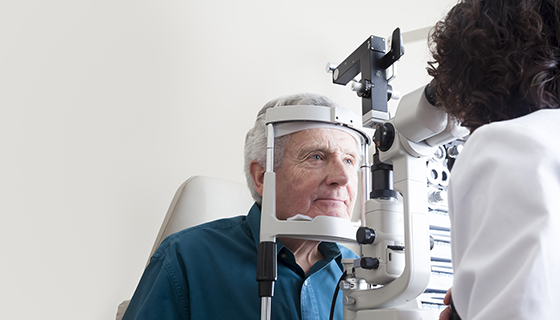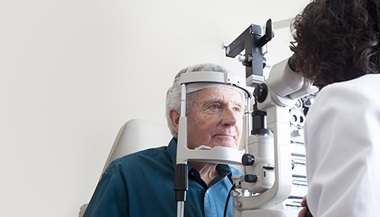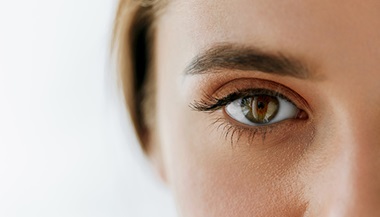Eyestrain
Featured Expert:
Eyestrain is caused by long periods of activity involving eye focus, such as viewing mobile devices and computer screens, reading books, driving or watching TV. Wilmer Eye Institute ophthalmologist Esen K. Akpek discusses what you need to know about eyestrain.
What causes eyestrain?
“When we look at something close-up, such as a computer screen or a cellphone, the lens of the eye naturally contracts. If you’re looking at a screen for prolonged periods, the lens doesn’t have the chance to relax, which can lead to eye fatigue,” explains Akpek.
This eye fatigue is also due to a decrease in blinking. Blinking is responsible for redistributing and replenishing the tear layer that smooths the surface across the cornea and helps sharpen your vision. Without blinking during prolonged viewing, the eye’s surface is more exposed to air and evaporation. This creates holes in the tear film and leads to irregularity of the corneal surface, which results in blurred vision and a continuation of the issue.
“Your reading speed decreases because you can’t see very well, which requires prolonged reading and visual fatigue — beginning the cycle again,” says Akpek.
What are symptoms of eyestrain?
Symptoms of eyestrain may include:
- Red, watery, irritated eyes.
- Tired, aching or heavy eyelids.
- Blurred vision and problems with focusing.
- Mild headache.
- Muscle spasms of the eye or eyelid.
- Inability to keep eyes open.
Eyestrain symptoms may resemble other eye conditions, so it’s best to speak with your ophthalmologist for diagnosis.
How is eyestrain relieved?
Symptoms of eyestrain are often relieved by:
- Resting the eyes.
- Changing the work environment to reduce reflections, glare and bright lighting, and increasing the room’s humidity.
- Wearing the proper prescription glasses or adjusting the font. Large-frame glasses cut down on air movement across the corneal surface and help prevent drying. Contact lenses, on the other hand, worsen the dryness.
- Using over-the-counter artificial tears.
How is eyestrain avoided?
- Schedule periodic rest breaks to avoid eye fatigue. Use the 20-20-20 rule as a guide: Every 20 minutes, look away to an object at least 20 feet away for at least 20 seconds.
- Keep your eyes moist, by blinking or using artificial tears, to prevent them from drying out.
- Position your digital screen slightly farther away than where you normally hold reading material. Screens should also be clean and dust-free, always in proper focus and with a display brightness that matches the lighting surrounding you.
- When using desktop screens during remote working or learning, place your screen at or slightly below eye level.
- Minimize lighting reflections and glare. This can be achieved with glare-reducing screen protectors and anti-reflective glasses.
- Talk with your ophthalmologist or optometrist, as some individuals who normally do not need glasses may need corrective lenses for computer work, particularly if you are above age 35.
Eyestrain and Blue Light
What is blue light?
Blue light is a high energy visible light ray that is given off by the sun, as well as human-made sources such as florescent lighting and the LED light emitted by digital screens.
Does blue light cause eyestrain?
“Blue light is not a cause of eyestrain," says Akpek. "The natural crystalline lens and the cornea of the eye are able to block excessive blue light.”
Do blue light glasses work to suppress eyestrain?
Since blue light is not a cause of eyestrain, blue light blocking glasses and filters are not an option for the relief of eyestrain.







